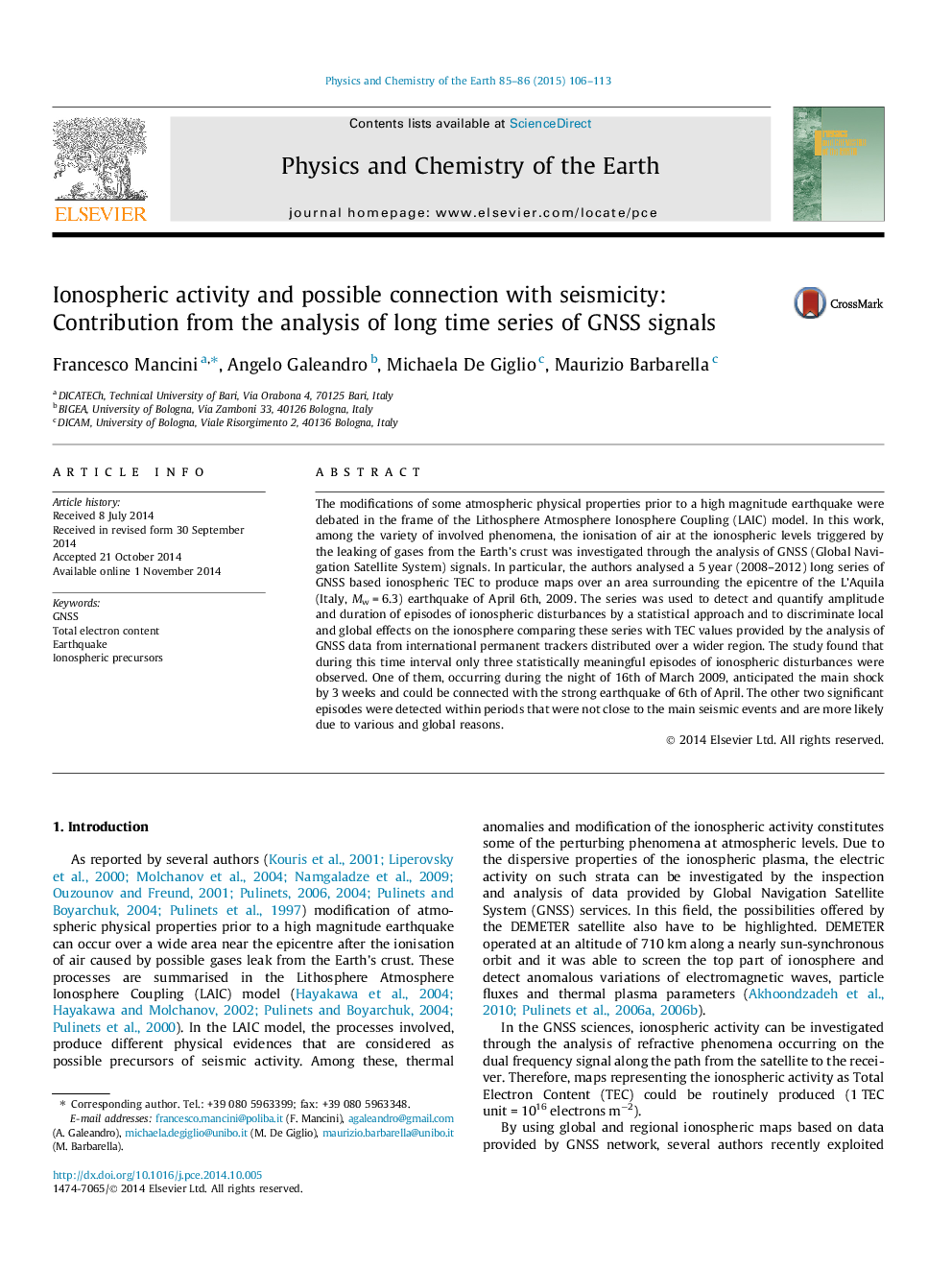| کد مقاله | کد نشریه | سال انتشار | مقاله انگلیسی | نسخه تمام متن |
|---|---|---|---|---|
| 4720936 | 1639350 | 2015 | 8 صفحه PDF | دانلود رایگان |

• A study on seismo-ionospheric precursors from long series of GNSS data was provided.
• We used time series of ionospheric maps from GNSS to model the ionospheric activity.
• Maps at different spatial scale were used to separate local from global phenomena.
• A statistical approach was selected to detect ionospheric anomalies at local scale.
• Temporal coincidences of ionospheric anomalies and seismic events were contemplated.
The modifications of some atmospheric physical properties prior to a high magnitude earthquake were debated in the frame of the Lithosphere Atmosphere Ionosphere Coupling (LAIC) model. In this work, among the variety of involved phenomena, the ionisation of air at the ionospheric levels triggered by the leaking of gases from the Earth’s crust was investigated through the analysis of GNSS (Global Navigation Satellite System) signals. In particular, the authors analysed a 5 year (2008–2012) long series of GNSS based ionospheric TEC to produce maps over an area surrounding the epicentre of the L’Aquila (Italy, Mw = 6.3) earthquake of April 6th, 2009. The series was used to detect and quantify amplitude and duration of episodes of ionospheric disturbances by a statistical approach and to discriminate local and global effects on the ionosphere comparing these series with TEC values provided by the analysis of GNSS data from international permanent trackers distributed over a wider region. The study found that during this time interval only three statistically meaningful episodes of ionospheric disturbances were observed. One of them, occurring during the night of 16th of March 2009, anticipated the main shock by 3 weeks and could be connected with the strong earthquake of 6th of April. The other two significant episodes were detected within periods that were not close to the main seismic events and are more likely due to various and global reasons.
Journal: Physics and Chemistry of the Earth, Parts A/B/C - Volumes 85–86, 2015, Pages 106–113